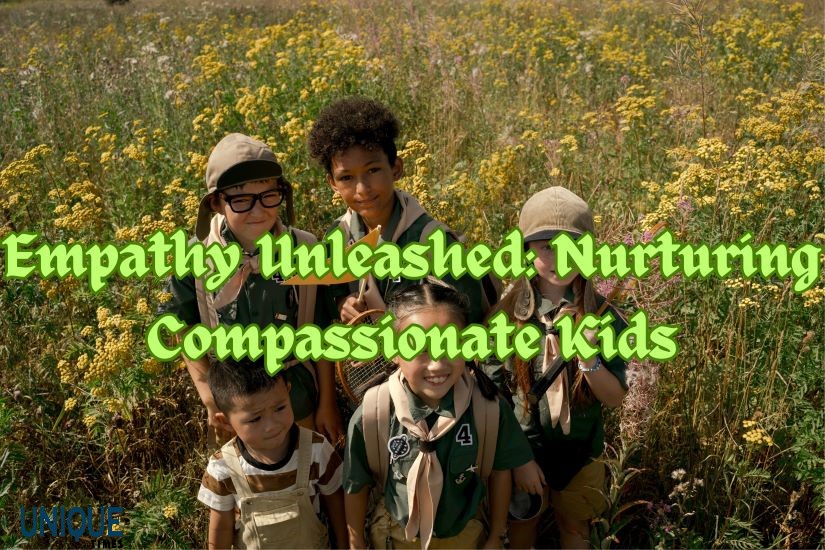Teaching Empathy: Nurturing Compassionate Kids

Empathy is a fundamental skill that lays the foundation for positive social interactions, emotional intelligence, and compassionate relationships. As parents and educators, fostering empathy in children is a crucial aspect of their emotional development. Let’s explore effective ways to teach empathy and nurture compassionate kids who understand and care for the feelings of others.
1. Lead by Example: Show Empathy in Action
Children are keen observers, and they learn by watching the actions of the adults around them. Demonstrate empathy in your daily interactions, whether it’s expressing understanding when someone is upset or helping a neighbor in need. Your actions serve as powerful examples for your children to emulate.
2. Encourage Perspective-Taking: Walk in Others’ Shoes
Help children develop the ability to see situations from different perspectives. Encourage them to consider how someone else might be feeling in a given circumstance. This fosters understanding and empathy, as they learn to appreciate the diversity of experiences and emotions.
3. Read Books on Empathy: Stories that Inspire Compassion
Books are wonderful tools for instilling empathy in children. Choose literature that explores diverse characters and addresses emotions and relationships. Discuss the characters’ feelings and perspectives to prompt conversations about empathy and understanding.
4. Teach Emotional Literacy: Identify and Express Feelings
Empathy begins with recognizing and understanding emotions. Teach children to identify their own feelings and express them in healthy ways. As they become more attuned to their emotions, they become better equipped to empathize with the feelings of others.
5. Engage in Acts of Kindness: Cultivate a Giving Spirit
Encourage acts of kindness within the family and community. Simple gestures like helping a friend with a task or sharing toys promote a sense of empathy and generosity. Engaging in acts of kindness reinforces the idea that our actions impact the well-being of others.
6. Use Empathy-Building Activities: Games that Teach Compassion
Incorporate empathy-building activities into playtime. Games that involve teamwork, cooperation, and understanding the emotions of others can be both educational and enjoyable. This hands-on approach helps children practice empathy in a fun and interactive way.
7. Foster Inclusive Friendships: Embrace Diversity
Encourage your child to build friendships with individuals from diverse backgrounds. Exposing them to different perspectives and experiences fosters empathy and helps them appreciate the richness of diversity. Celebrate and discuss the value of inclusive relationships.
8. Open Communication: Create a Safe Space for Expression
Establish an environment where children feel comfortable expressing their emotions and thoughts. Open communication fosters empathy as children learn to listen actively, validate others’ feelings, and respond with kindness and understanding.
9. Address Bullying: Teach Empathy as an Antidote
Discuss the negative impact of bullying and emphasize the importance of empathy in preventing harm. Teach children to stand up against bullying, be supportive allies, and intervene when they witness unkind behavior. Empathy acts as a powerful antidote to cruelty.
10. Reflect and Discuss: Debrief Everyday Experiences
Take time to reflect on everyday experiences with your child. Discuss interactions, conflicts, and positive moments, prompting them to consider how their actions and words affect others. These debriefing sessions provide valuable opportunities for empathy-building conversations.
By intentionally incorporating these strategies into your parenting or teaching approach, you contribute to the development of empathetic and compassionate children. In a world that benefits greatly from empathy, nurturing this essential skill equips children to navigate relationships with kindness, understanding, and a genuine concern for others’ well-being.








